San Antonio Economic Indicators

August 2, 2021
The San Antonio Business-Cycle Index continued to increase in June. Payrolls expanded and the unemployment rate fell, though neither measure is close to its prepandemic level. Local consumer spending moved sideways but remained above pre-COVID-19 levels. Home sales activity declined in June, and COVID-19 hospitalizations rose markedly in recent weeks.
Business-Cycle Index
The San Antonio Business-Cycle Index—a broad measure of economic activity in the metro—accelerated to a strong 11.0 percent growth in June after a soft expansion of 4.5 percent in May (Chart 1). Recent activity in the index can be attributed to positive job growth and a lower unemployment rate.
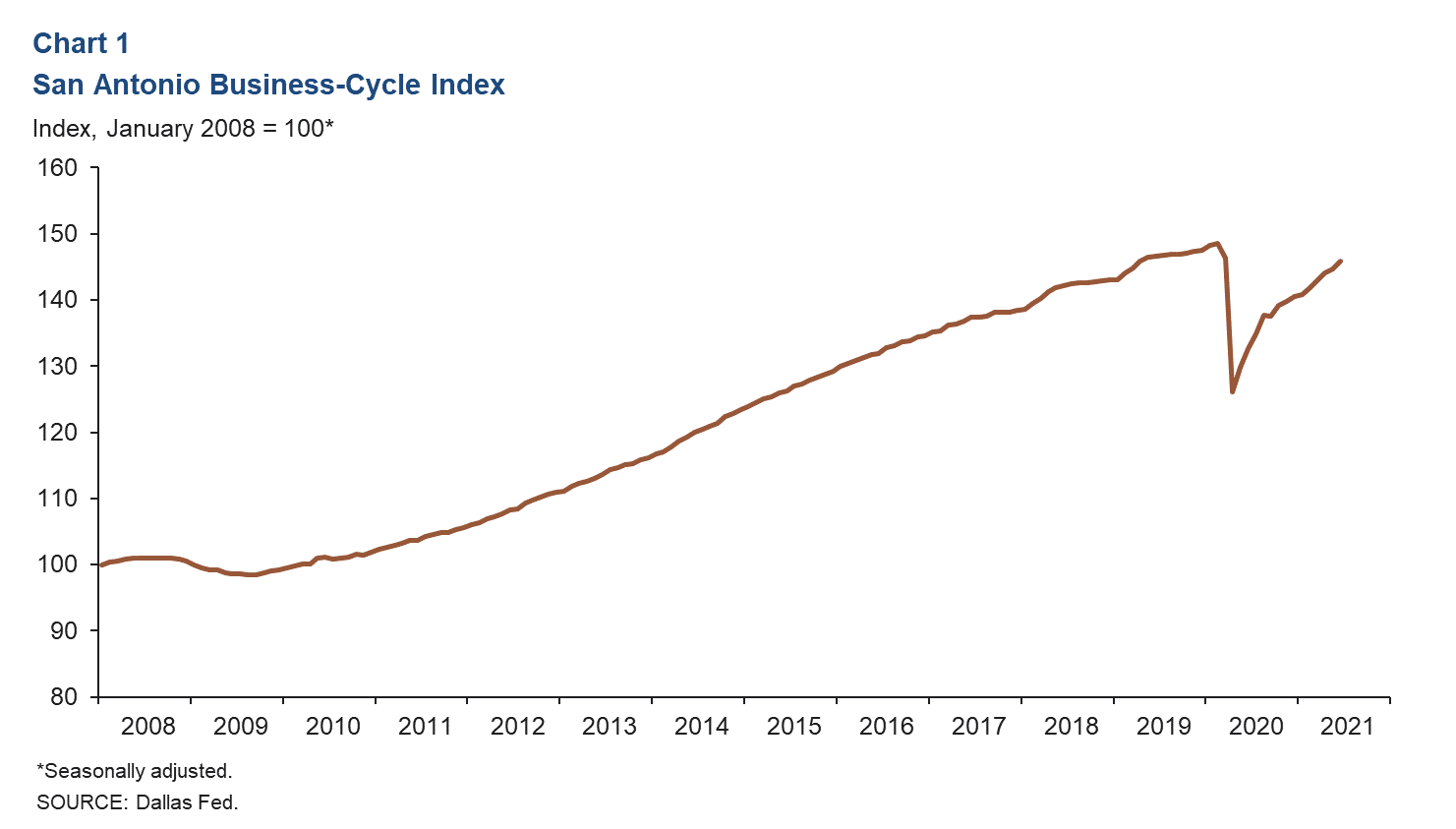
Labor Market
Unemployment Rate Ticks Down
The metro’s unemployment rate declined in June to 5.5 percent, the lowest since March 2020. The state’s jobless rate fell slightly to 6.5 percent, and the nation’s rate ticked up to 5.9 percent (Chart 2).
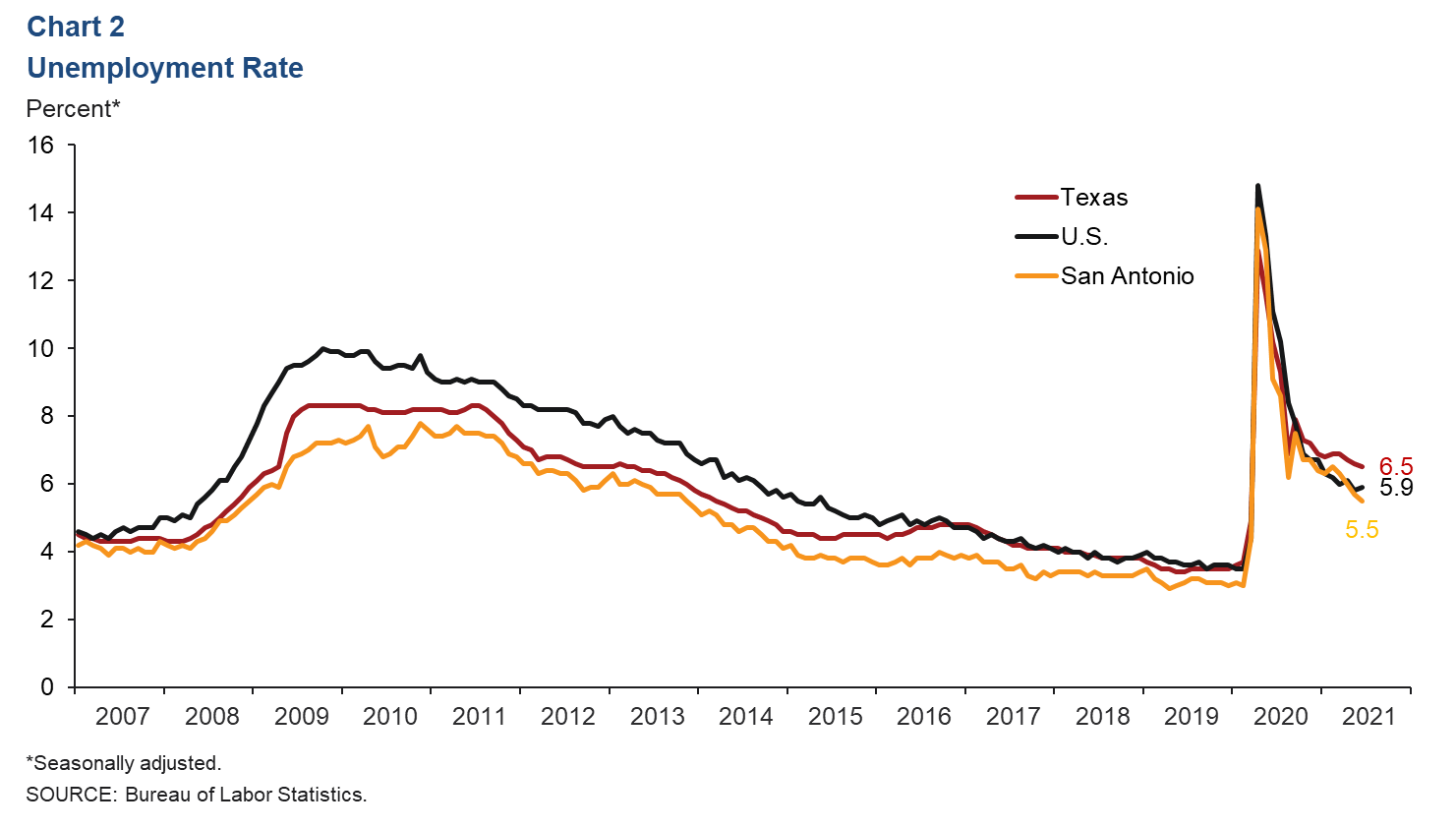
Second-Quarter Job Growth Positive Across Most Sectors
Net payrolls in San Antonio grew an annualized 5.0 percent (12,930 jobs) in the second quarter, with gains across most sectors (Chart 3). Leisure and hospitality led the growth (15.1 percent, or 4,190 jobs) and was followed by government (8.8 percent, or 3,650 jobs), other services (5.5 percent, or 480 jobs) and financial activities (4.3 percent, or 1,000 jobs). Industries that posted net declines were construction (-6.8 percent, or 1,030 jobs) and information (-0.8 percent, or 40 jobs). In March and April 2020 combined, 130,511 jobs were lost as the pandemic hit. As of June 2021, 83.3 percent of those jobs had been recovered.
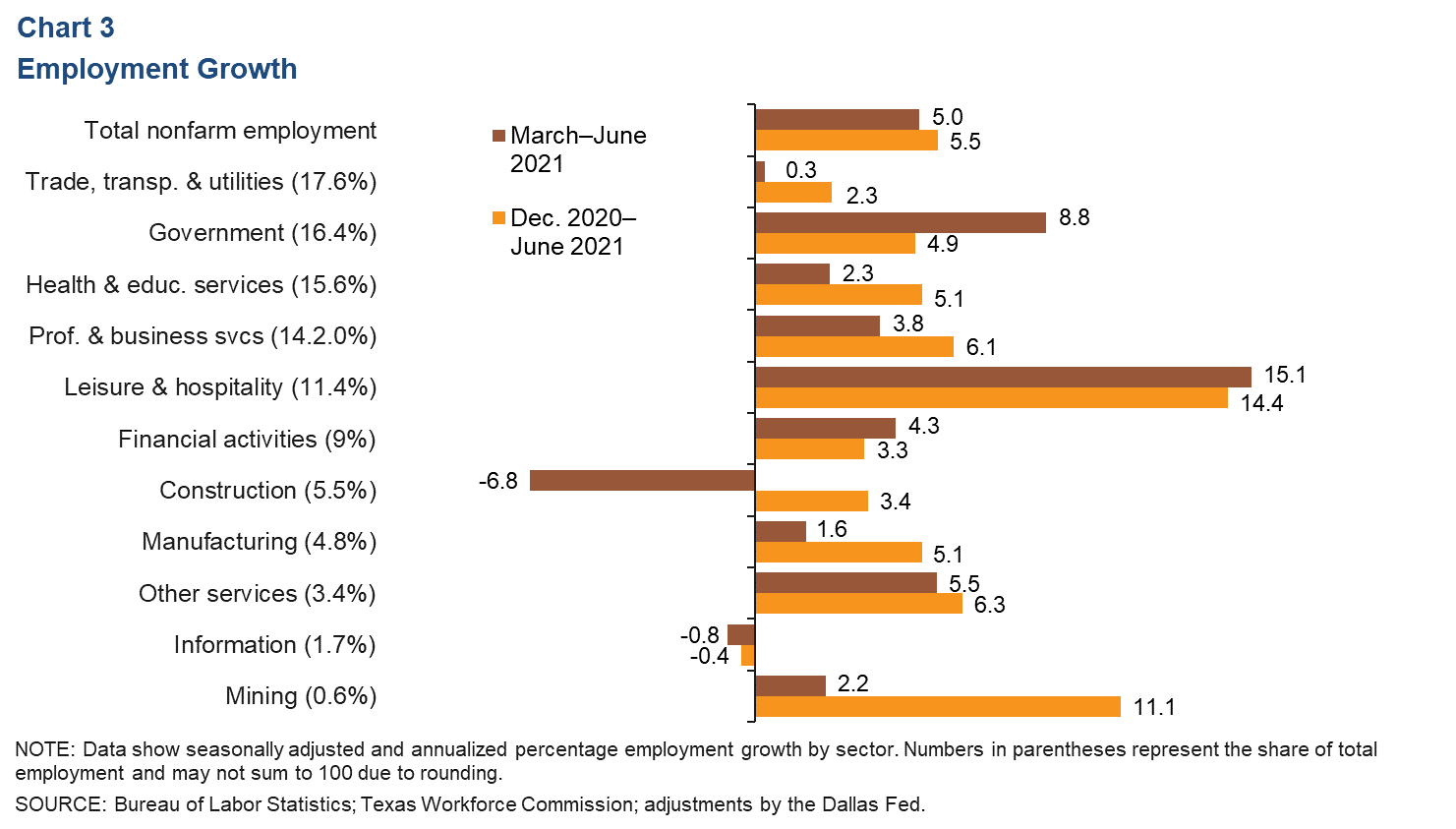
Consumer Spending
Since early February 2021, consumer spending has remained generally above January 2020 levels, except for the brief dip to below prepandemic levels during the week of Winter Storm Uri in mid-February. Spending in recent weeks has generally moved sideways. As of July 18, spending was 12.1 percent higher in Bexar County and 11.4 percent higher in Texas relative to January 2020 (Chart 4).
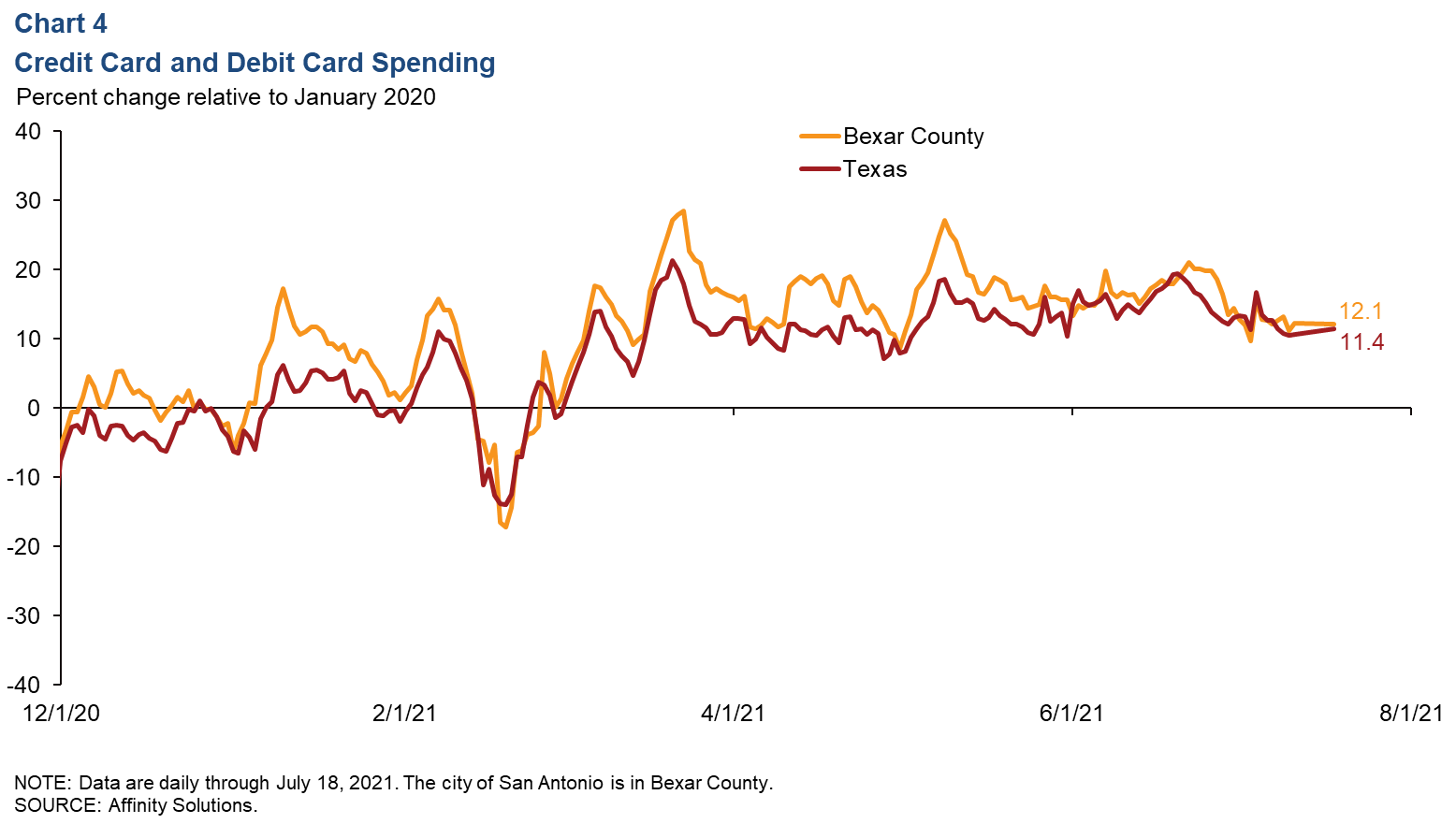
Real Estate
Metro existing-home sales declined in June (-1.9 percent month/month) after expanding 2.3 percent in May (Chart 5). In the state, sales fell 1.8 percent in June. In the first half of the year, the metro’s home sales were up 16.4 percent compared with the same period in 2020—slightly below the state’s 18.0 percent increase. The median price of homes sold in the metro in May was $280,015—a 10.2 percent increase year over year. In the state, the median home price in May was $298,708, a 13.2 percent jump.
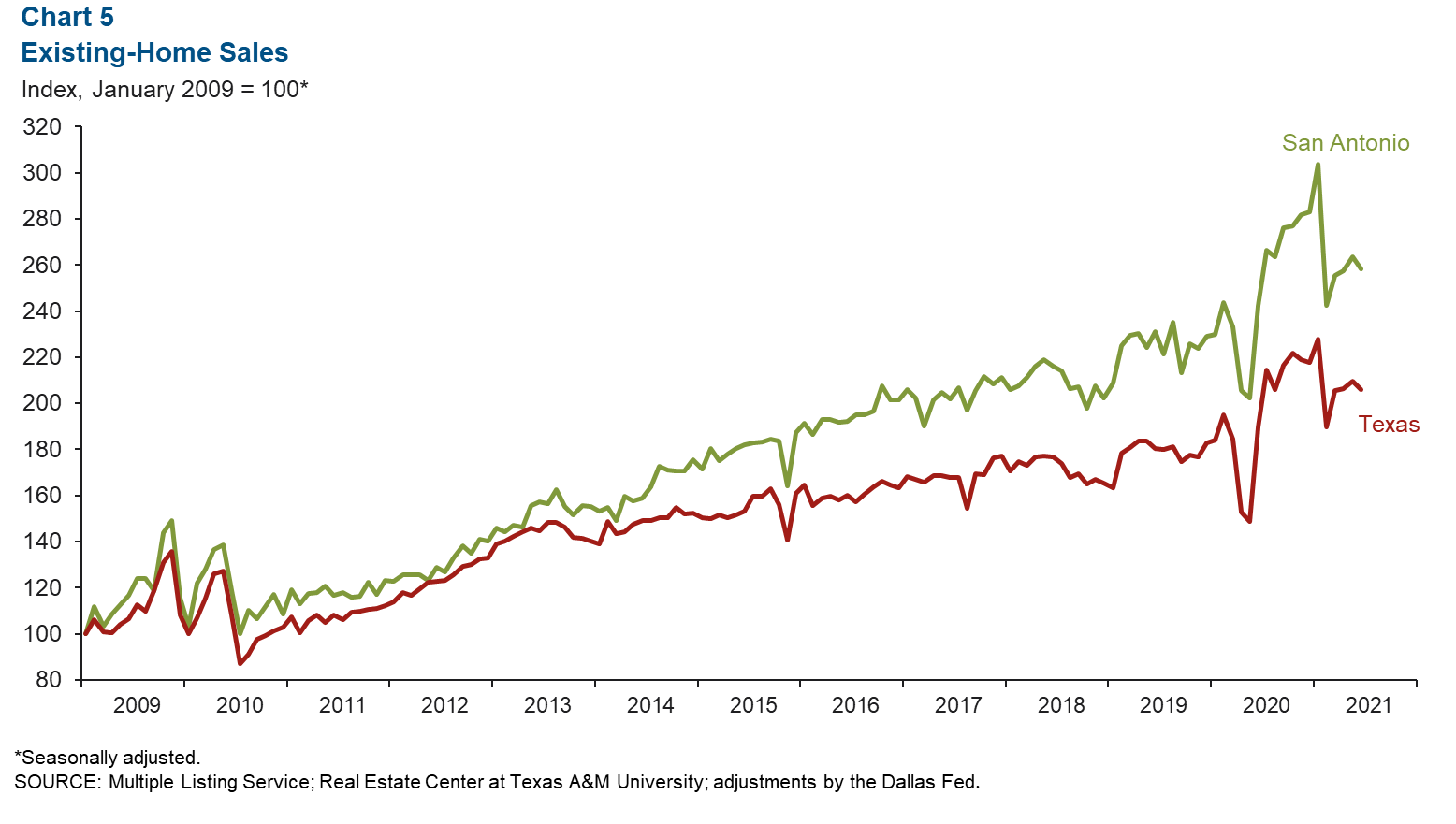
COVID-19 Hospitalizations
The number of people currently hospitalized with COVID-19 in San Antonio has increased drastically since early July (Chart 6). As of July 26, the number hospitalized in Texas was 4,173, the highest since mid-March of this year. In San Antonio, the number of currently hospitalized was 437, the highest since early March. The recent sharp increase in hospitalization is likely due to the spread of the COVID-19 Delta variant.
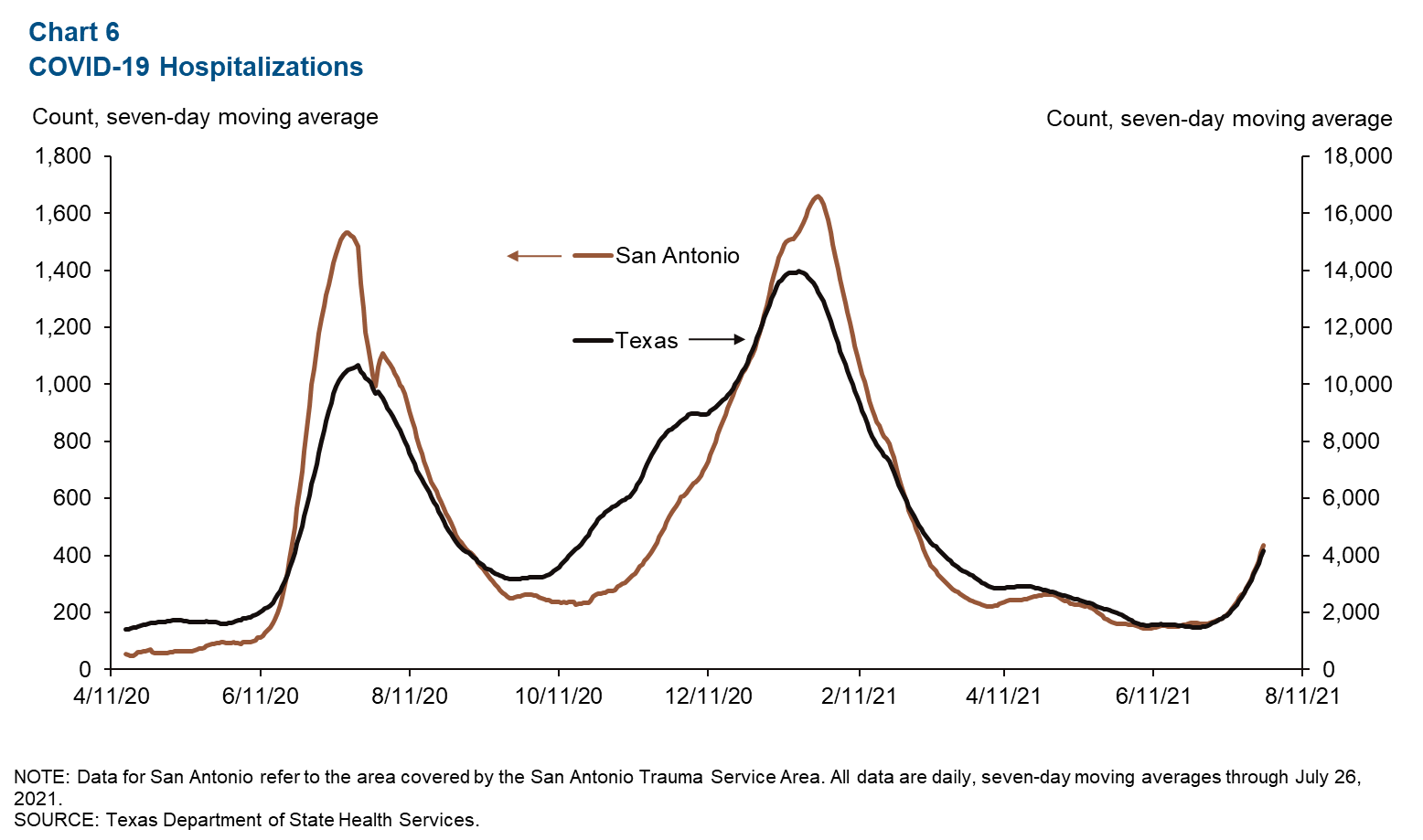
NOTE: Data may not match previously published numbers due to revisions.
About San Antonio Economic Indicators
Questions can be addressed to Judy Teng at judy.teng@dal.frb.org. San Antonio Economic Indicators is published every month during the week after state and metro employment data are released.